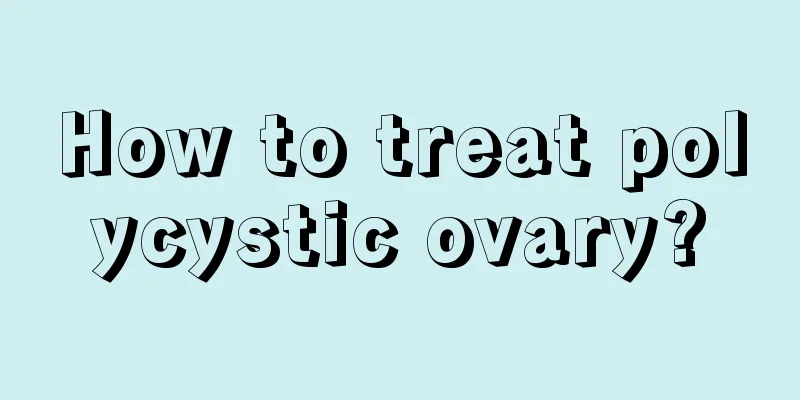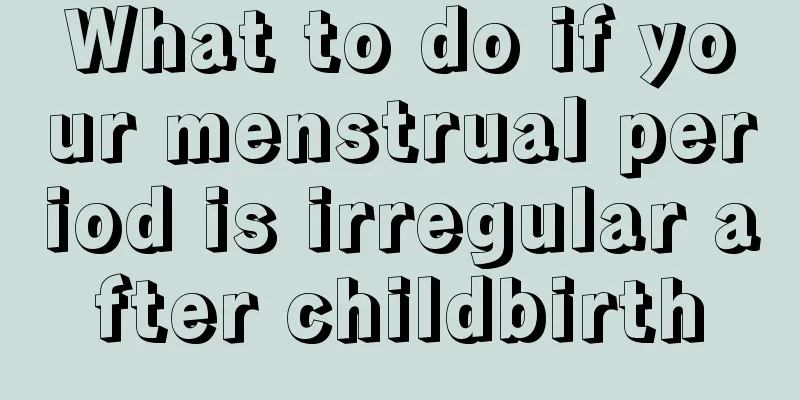How to treat polycystic ovary?

|
Polycystic ovary is a disease that many women suffer from. It has a great impact on women's physiological life. Some women become infertile after marriage because of polycystic ovary. Common symptoms of polycystic ovary in women are scanty menstruation and obesity. In recent years, with the development of technology, many people have begun to pay attention to the issue of how to treat polycystic ovary. Let us introduce it to you below. 1. Obesity and insulin resistance Increase exercise to lose weight, correct endocrine and metabolic disorders aggravated by obesity, reduce insulin resistance and hyperinsulinemia, reduce IGF-1, increase IGfBP-1, and at the same time increase SHBG to reduce free androgen levels. 2. Bilateral ovarian wedge resection It is suitable for patients with elevated blood testosterone, enlarged bilateral ovaries, and normal DHEA and PRL (indicating that the main cause of the disease is in the ovaries). Partial ovarian removal to eliminate excess androgen production in the ovaries can correct the disorder of the hypothalamus-pituitary-ovarian axis. However, the site of removal and the amount of tissue removed are related to the efficacy, and the effectiveness varies. The pregnancy rate is 50% to 60%. The postoperative recurrence rate is high, and if pelvic adhesions occur, it will be detrimental to pregnancy. Laparoscopic ovarian cauterization or resection can also achieve certain results. 3. Treatment of hirsutism You can cut the hair regularly or apply "hair loss agents" but avoid pulling it out to prevent stimulating excessive growth of hair follicles. You can also use electrolysis treatment or androgen-inhibiting drugs. 4. Artificial menstrual cycle For patients who do not have hirsutism and do not desire to have children, progesterone can be given for artificial cycle treatment to avoid excessive proliferation and cancer of the endometrium. In fact, to put it simply, polycystic ovary is inseparable from our own diet. People who like to eat high-calorie and high-cholesterol foods such as cream, fatty meat, animal liver, etc. are more likely to suffer from polycystic ovary. Therefore, this requires us to eat more light foods in daily life and avoid eating foods with high fat content. |
<<: How should women with kidney deficiency be treated better?
>>: How can polycystic ovary syndrome be diagnosed?
Recommend
Do not relax epidemic prevention and control! Beijing CDC: Six pieces of protective knowledge to keep in mind
At present, the overseas epidemic continues to sp...
What is stroke?
...
Diet therapy for ovulation bleeding
The female body is actually in a different state ...
What is the best month to visit Phuket? What snacks are there in Phuket? What are the best ones?
Phuket's seafood is famous for its large amou...
Is it normal to have heavy menstrual flow after an abortion?
Most women will choose to have an abortion to end...
Does the HPV virus still exist after cone biopsy?
HPV virus, or human papillomavirus infection, is ...
Can women eat fresh fruit after abortion?
I believe everyone is familiar with abortion. Aft...
A small bump on the labia
What is the reason why pimples grow on women'...
Leucorrhea in the first week of pregnancy
The vaginal secretions in each pregnancy cycle ar...
What does leucorrhea cleanliness level 1 mean?
Leucorrhea is a liquid secreted from the female v...
The lower body vulva is a little ulcerated
What is the reason for ulceration in the private ...
Will eating whole wheat bread at night make you fat? When is the best time to eat whole wheat bread?
Whole wheat bread is a kind of bread that is rich...
“It’s worth a fortune to be thin in old age”? Not necessarily! Being thin in old age does not mean you are really healthy
There is an old Chinese saying: "A slim body...
How to comfort a girl with a fever
Whenever the temperature changes drastically, man...
![[Fat Bear Science] A "cyst" was found on the liver during a physical examination. Is it cancer? How to treat it? Click here to find out](/upload/images/67f1ec99a27b5.webp)








